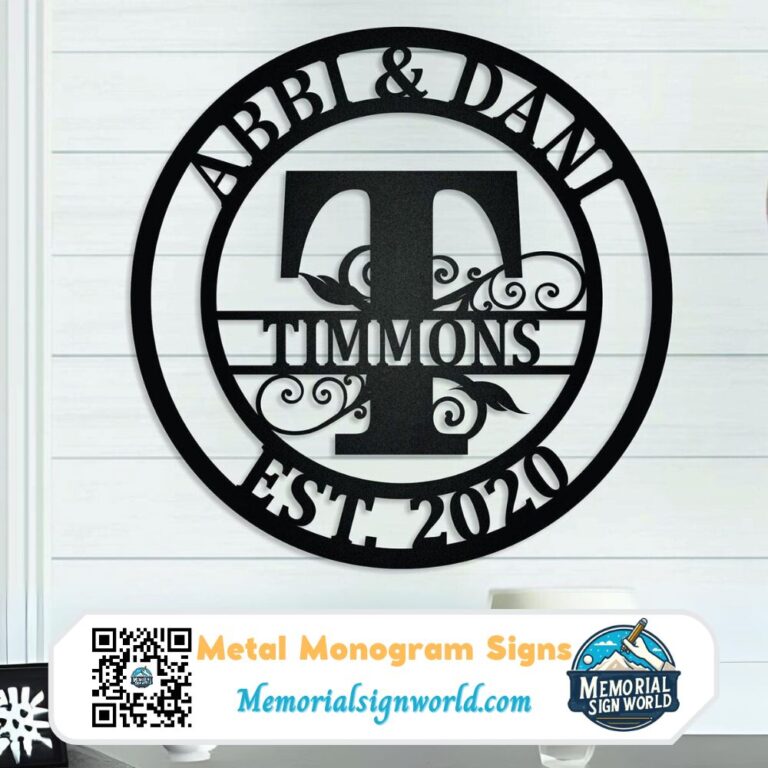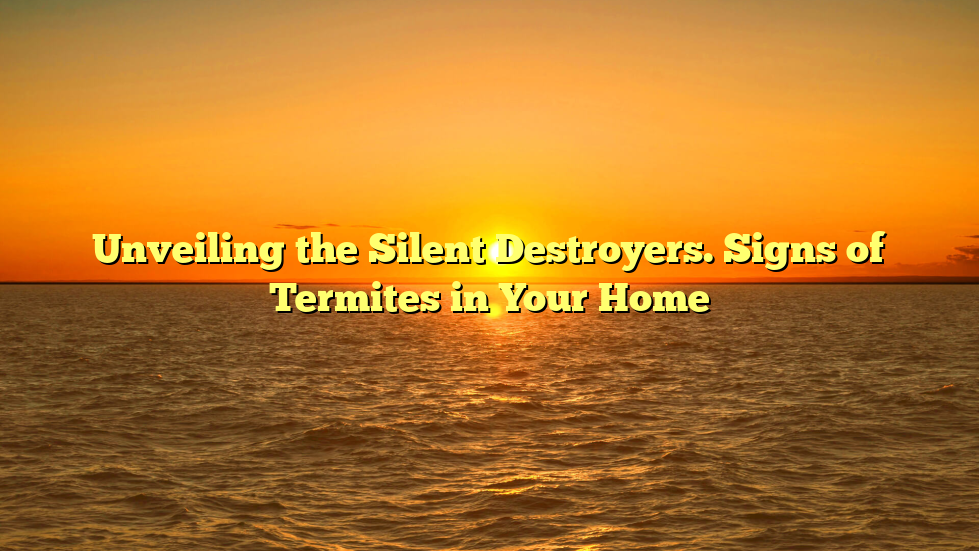Termites are notorious pests that can cause extensive damage to homes and buildings. Often referred to as silent destroyers, they can go unnoticed for months or even years, wreaking havoc on the structural integrity of your property. Identifying the signs of a termite infestation early on is crucial in order to minimize the damage and take appropriate measures to eradicate these pests. In this blog post, we will explore the various signs that indicate the presence of termites in your home and provide valuable insights on prevention and treatment.
See More Metal Monogram Sign
1. Understanding Termites
Before delving into the signs of a termite infestation, it’s essential to have a basic understanding of these insects. Termites are small, soft-bodied insects that feed on cellulose-based materials, such as wood. They live in colonies, which can range from a few hundred to millions of individuals. There are three main types of termites commonly found in households. subterranean termites, drywood termites, and dampwood termites. Each type has distinct behaviors and preferences when it comes to infesting homes.
2. Mud Tubes and Shelter Tubes
One of the most visible signs of a termite infestation is the presence of mud tubes or shelter tubes. Subterranean termites, which are the most common type found in homes, build these tubes to provide protection and moisture while traveling between their colony and food sources. These tubes are typically about the width of a pencil and can be found along foundation walls, crawlspaces, or any other area where termites can access your home. If you notice these mud tubes, it’s a clear indication that termites have made their way into your property.
See more Product at Memorial Sign World
3. Wood Damage and Hollowed Out Structures
Termites primarily feed on wood, causing significant damage to structures over time. One of the key signs of a termite infestation is the presence of wood damage. Termites eat wood from the inside out, leaving behind a thin outer layer that can easily be punctured or crumbled. Tap or knock on suspected areas of infestation, such as wooden beams, furniture, or baseboards. If the wood sounds hollow or feels soft and spongy, it’s likely that termites have been feasting on it.
4. Discarded Wings
Termites undergo swarming behavior when they establish new colonies. During this process, winged termites, also known as swarmers or alates, leave their current colony in search of a mate and a suitable location for a new colony. Once they find a suitable spot, they shed their wings, which can often be found near windowsills, light fixtures, or other areas with access to light sources. The presence of discarded wings is a telltale sign that termites might be present in your home.
See More Memorial Sign World Articles:
- Unveiling the Signs of Gallstones. A Comprehensive Guide
- Unveiling the Signs of Memory Loss. A Comprehensive Guide
5. Frass or Termite Droppings
Frass refers to termite droppings or fecal pellets that termites expel from their colonies. These droppings resemble tiny wood-colored pellets and are often found near termite-infested areas. Drywood termites, in particular, tend to leave behind frass as they create tunnels and galleries within wooden structures. If you notice piles of what appear to be small wooden pellets in your home, it’s a strong indication of a termite infestation.
6. Sagging Floors and Ceiling
As termites consume wood and weaken structures from the inside, you may start noticing signs of structural damage such as sagging floors or ceilings. This occurs when termites have caused enough damage to compromise the stability of the affected areas. If you observe any unusual dips or sags in your floors or ceilings, it’s essential to investigate further for potential termite activity.
7. Swarmers or Winged Termites
As mentioned earlier, swarmers are winged termites that emerge during certain times of the year for mating purposes. Spotting swarmers indoors is a strong indication that a termite colony is nearby. These winged insects are attracted to light sources and are often found near windowsills or light fixtures. If you observe swarmers in your home, it’s crucial to take immediate action as their presence suggests that termites are likely infesting your property.
8. Prevention and Treatment
Prevention is key when it comes to termite control. Here are some measures you can take to minimize the risk of a termite infestation:
-
Eliminate moisture sources. Termites thrive in moist environments. Fix any leaks in pipes, faucets, or roofs promptly. Ensure proper drainage around your property and avoid water accumulation near the foundation.
-
Remove wood-to-soil contact. Avoid direct contact between wooden structures and soil. Provide a minimum gap of 6 inches between soil and wooden parts of your home.
-
Regular inspections. Conduct routine inspections of your property for signs of termite activity. Pay attention to vulnerable areas like basements, crawlspaces, attics, and wooden structures.
-
Maintain ventilation. Proper ventilation helps control humidity levels, making your home less attractive to termites.
If you suspect a termite infestation despite preventive measures, it’s advisable to consult professional pest control services for an accurate assessment and appropriate treatment options.
9. Conclusion
Termites are destructive pests that can cause significant damage to your home if left untreated. By familiarizing yourself with the signs of termite infestation discussed above, you can detect their presence early on and take swift action to minimize the damage. Remember that prevention is crucial, so implementing preventive measures and conducting regular inspections will go a long way in safeguarding your property from these silent destroyers.
#memorialsignworld, #memorialsignworldstore,#MetalMonogramSigns, #PetMemorialCanvas, #ChickenCoopSign/

